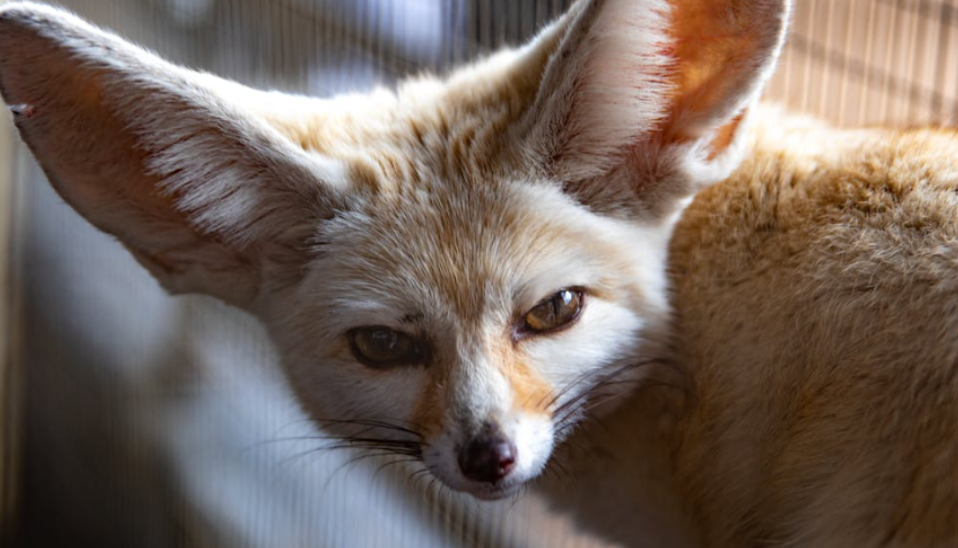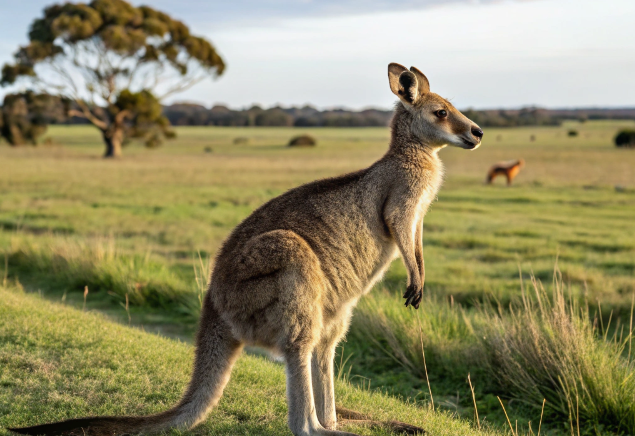This Is the Fennec Fox: Ears for Days and a Roaring Nightlife

© Magda Ehlers / Pexels
Who doesn’t love a small animal with cute eyes and fluffy fur? They can nuzzle up to you and fill your heart with warmth and happiness. However, not all small animals are the first to be chosen as pets. And that is where the Fennec Fox comes into play. While hearing the word “fox” might throw you off, these small and cute animals are nothing to be afraid of!
What Is a Fennec Fox?
A fennec fox (Vulpes zerda) is a small nocturnal fox species native to the Sahara Desert in North Africa. It is well-known for its distinctive physical characteristics, including its small size, large ears, and sandy-colored fur. Fennec foxes are one of the smallest fox species, typically weighing between 1.5 to 3.5 pounds (0.7 to 1.6 kilograms). They have a body length of about 9 to 16 inches (23 to 41 centimeters) and a tail length of around 7 to 12 inches (18 to 31 centimeters).
One of the most distinctive features of the fennec fox is its large ears, which can measure up to six inches (15 centimeters) in length. These ears serve multiple purposes, helping to dissipate heat and detect prey in the desert environment.
Fennec Foxes and Their Adaption to Dessert Life
Fennec foxes, indigenous to the sandy regions of the Sahara and other parts of North Africa, have evolved unique adaptations to thrive in their arid environment. Their nocturnal habits serve as a strategic response to the intense daytime heat of the desert. To aid in temperature regulation, fennec foxes possess distinctive, batlike ears that not only radiate excess body heat but also function as effective radar for locating prey.

The foxes’ physical features include long and thick fur, serving a dual purpose of insulation during chilly nights and protection against the scorching sun during daylight hours. Even their feet are adapted for survival in the desert landscape, covered in hair that acts like natural snowshoes, allowing them to traverse the hot sand with relative ease. Additionally, the hairy feet serve as efficient shovels, enabling these foxes to engage in frequent digging activities, as they commonly reside in underground dens.
Behavior and Diet Culture for Fennec Foxes
Fennec foxes form small communities, typically comprising about ten individuals. During mating season, male fennecs mark their territory with urine and become competitive. They are opportunistic eaters, foraging for plants and consuming rodents, eggs, reptiles, and insects. Adapted to desert life, they can endure extended periods without water.

The foxes are characterized by cream-colored fur and black-tipped tails, making them popular in the captive pet trade. Unfortunately, they are also hunted for their fur by local communities. The status of wild fennec fox populations remains relatively unknown.
How Do They Communicate?
Fennec foxes communicate through a variety of vocalizations and body language. They produce a range of vocal sounds, including barks, squeaks, purrs, and whines. These vocalizations are used for different purposes, such as expressing excitement, signaling danger, or communicating with mates and offspring. Like many other canids, fennec foxes also use scent marking to establish territory and communicate with other members of their group. Male fennecs, in particular, mark their territory with urine during the mating season.
In their family groups, fennec foxes engage in various social behaviors to strengthen bonds and maintain group cohesion. Playful activities, grooming, and shared activities such as hunting contribute to the social fabric of the group.
Should You Keep Fennec Foxes as Pets?
Pet fennec foxes are generally not known for being cuddly with humans, and their skittish nature, influenced by their prey instincts, can make them easily startled. As primarily nocturnal animals, their increased activity during the night can pose challenges for pet owners, as their high energy levels may be challenging to manage during typical sleeping hours. Consequently, caring for a pet fennec fox can be a demanding task.
Can You Own Them As Pets?
The regulations for owning a fennec fox vary widely across jurisdictions. In the United States, regulations range from outright bans to permit requirements, and local laws may sometimes conflict with state laws. It is essential to check the specific regulations in your area before considering ownership of a fennec fox.

When obtaining a fennec fox, it is crucial to choose a reputable breeder or rescue organization. While the chances of finding wild-caught fennecs for sale in the United States are low, it’s important to ensure that your fennec is captive-bred. Captive-bred fennec foxes typically adapt better to life in captivity compared to those previously living in the wild.
Fun Facts About Fennec Foxes
Can’t get enough of this cuddly, fluffy, fellow? Here are some extra fun facts about Fennex foxes:
1. They Are Nocturnal
Fennec foxes are primarily nocturnal, meaning they are most active during the night. This behavior is an adaptation to the extreme temperatures of the desert, allowing them to avoid the searing heat of the day. They have developed a strategy of seeking shelter in sand burrows. These burrows provide a cooler and more stable microenvironment, helping them avoid the harsh conditions on the surface.

2. They Prioritize Family Over Everything
Fennec foxes are monogamous, mating for life and producing one litter of two to five pups annually. Offspring may stay with the family as new pups are born. The male supports the pregnant and nursing female by providing food and protection. Pups are weaned around 2 months old and reach maturity in approximately nine months. Despite rapid growth, they can live up to 10 years in the wild and 13 years in captivity, according to the San Diego Zoo.
3. They Are Very Social
Fennec foxes are known for their robust family lives and often form large and close-knit social circles. While observations primarily come from captivity, these foxes appear to be highly social, enjoying the company of other foxes and engaging in play even as adults. Group sizes can reach up to 10 individuals, with the size typically influenced by the availability of food resources in their territory.
4. They Don’t Drink Water
The fennec fox is exceptionally well-adapted to desert conditions, capable of surviving without access to free-standing water for extended periods. It maintains hydration in the Sahara heat by consuming leaves, roots, and fruits, which contribute to nearly 100 percent of its water intake. Additionally, the diet includes grasshoppers, locusts, small rodents, lizards, birds, and eggs. The fox also drinks collected condensation in its den for additional hydration.
5. Their Ears Have Multiple Purposes
The Vulpes zerda, or fennec fox, holds the title of the smallest fox and boasts the largest ears, often half as long as its body, surpassing even the bat-eared fox. These 6-inch-long, upward-pointing ears serve the dual purpose of aiding in prey detection underground and facilitating heat loss, contributing to the fox’s ability to stay cool in harsh desert environments. This adaptation is one of several developed by the fennec fox for survival in challenging desert conditions.

Endangerment and Conservation Status
As per the International Union for Conservation of Nature (IUCN) Red List, the fennec fox is currently classified as a species of least concern. Although there are no significant threats to wild populations in their desert habitat, ongoing habitat loss poses a concern. Additionally, the fennec fox faces risks from the illegal pet trade, particularly in Northern Africa, where they are vulnerable to trapping, hunting, and commercial sale.
Are you a fan of Fennec Foxes, or do you prefer your regular list of pets?
You might also want to read: How to Make Your Home Pet-Friendly


